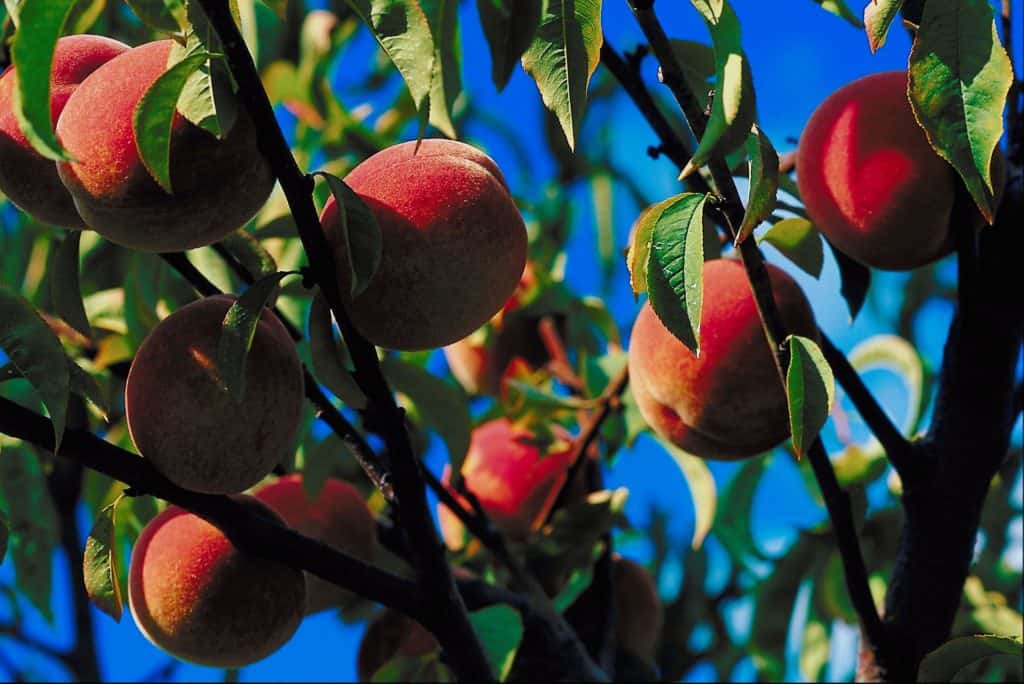Start an Orchard This Spring

Dreaming of the bounty of summer fruit? Growing fruit trees can be a rewarding challenge.
Sour cherries, sweet cherries, plums, peaches and apples can all be grown in our area. Once you know what you’d like to grow, evaluate the space you will need. Smaller trees need at least 10 feet between them. You’ll most likely need a minimum of two trees of each type of fruit to get good pollination—even if it is a self-pollinating tree. You need two different varieties that bloom at the same time to insure good fruit set. For example, sour cherries are self-pollinating but planting two different varieties will bear more fruit.
Determine how much room you have available in full sun, with well-draining loamy soil. Fruit trees need a pH range of 6 to 7. Organic amendments such as compost are important for stabilizing the soil pH and allowing sandy soils to hold moisture.
Compost is also important for adding air spaces to clay soil and allowing drainage. Leafgro is a great compost amendment for improving the soil for fruit trees. After performing a soil test, you can determine how much lime to add to your soil since most of our soils tend to be acidic.
Prepare your soil now for spring planting. These fruit trees like nitrate nitrogen as a fertilizer. After planting your trees, keep them short after one to two seasons so that you don’t need a ladder to harvest fruit. In August, plant daikon radish between your fruit trees as a green manure to rot in the ground. Their roots will allow calcium and phosphorus to get down into the soil. Daikon radish will capture 150–200 pounds of nitrogen per acre and should be planted every year around fruit trees. Micro-nutrients such as sulfur, zinc, manganese, iron, copper and boron are also important for fruit trees.
Standard trees grow very large, whereas semi-dwarf and dwarf varieties will take up less space. Apples have different root stocks that reduce the size of the tree. Even a small patio can support an apple tree. Scarlet sentinel and North Pole are dwarf varieties that will grow in an 18-inch pot.
Start your planning now for the fruit trees you want that will fit your actual space and taste.
